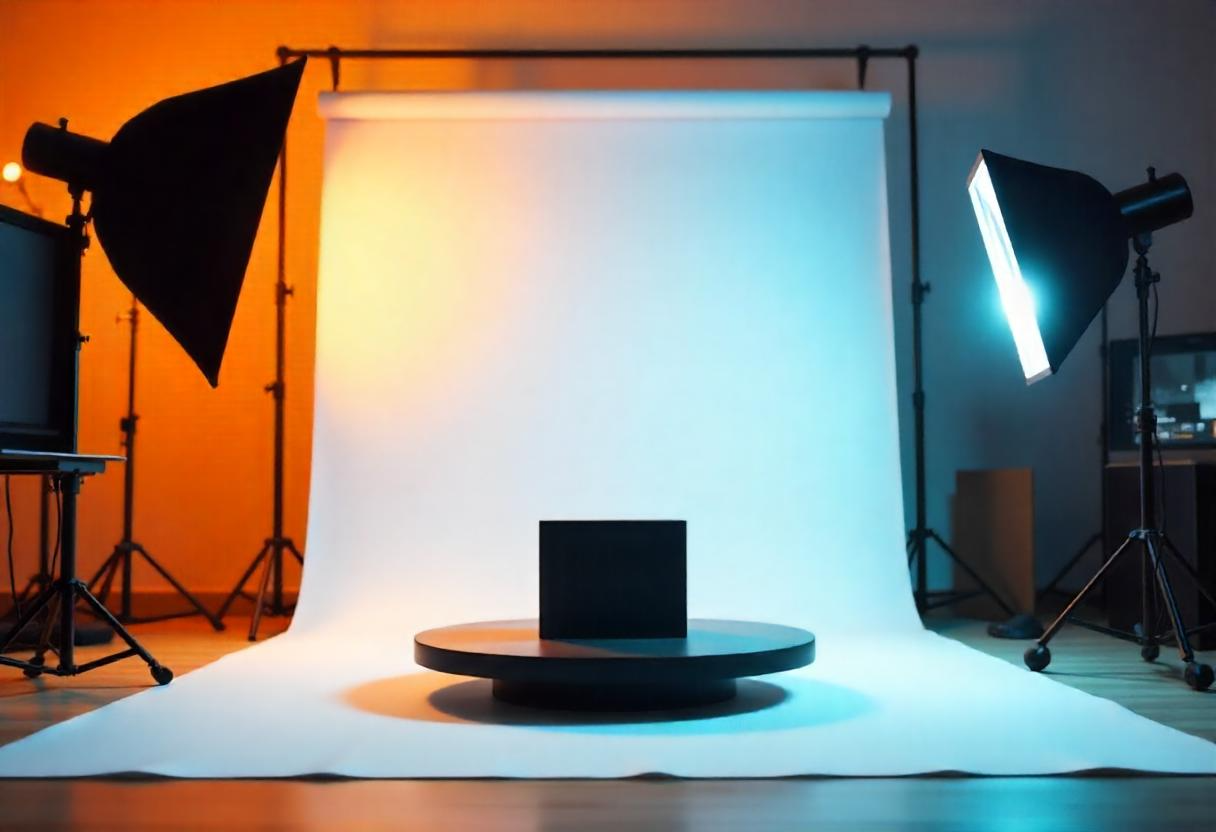3 Important Composition Rules in Photography: How to Take Better Photos
Whenever the word photography comes to our mind we usually imagine a picture or something related to nature. The composition also plays an important role in photography.
Now, coming towards Photography composition.
It is the art of arranging elements within a frame to create visually appealing and meaningful images. It is not just about pointing and shooting; it is about telling a story, conveying emotions, and capturing the essence of a moment.
In this blog, we’ll explore the significance of photography composition, composition rules in photography, how to improve photography composition, basic photography composition tips, and composition photography examples.
Why is Composition Important in Photography?
Composition is the soul of photography. It is what guides the viewer’s eye, conveys emotions, and tells a story within a single frame. A well-composed photograph can evoke a range of emotions, from joy and tranquillity to curiosity and awe. Here are some key reasons why composition is crucial in photography:
Capturing Attention: An effectively composed photograph grabs the viewer’s attention and directs it toward the subject or focal point.
Enhancing Storytelling: Composition helps convey the message or story you want to tell, guiding the viewer’s interpretation of the image.
Do you want free career counseling?
Ignite Your Ambitions- Seize the Opportunity for a Free Career Counseling Session.
- 30+ Years in Education
- 250+ Faculties
- 30K+ Alumni Network
- 10th in World Ranking
- 1000+ Celebrity
- 120+ Countries Students Enrolled
Creating Impact: Good composition elevates the visual impact of your photographs, making them more memorable and powerful.
Aesthetic Appeal: Well-composed images are aesthetically pleasing and leave a lasting impression on the viewer.
Professionalism: Mastering composition techniques can distinguish amateur photographers from seasoned professionals.
Book Now →
Read Also: Lighting Techniques for Product Photography
Basic photography composition tips
After following some basic photography composition tips, photographers can capture great moments that resonate with viewers. Basic photography composition tips are the foundation of creating visually appealing images. Start with the rule of thirds, where you divide your frame into thirds both vertically and horizontally, placing key elements along these lines or their intersections. Leading lines draw the viewer’s eye through the photo, while foreground and background add depth and context. Experiment with symmetry for balance or asymmetry for dynamism. Repetition and patterns create visual interest, while contrast adds drama. Lastly, remember the rule of odds, which suggests that odd numbers of objects tend to be more visually appealing. Mastering these basic photography composition tips will elevate your photography and help you capture moments with impact and artistry.
3 Basics Composition rules in photography
Photography, as an art form, is governed by a set of fundamental composition rules in photography that serve as the foundation for creating compelling and visually appealing images. The basic rules of composition are essential for creating visually appealing and impactful images. In this blog, we’ll explore 3 fundamental composition rules that can help you elevate your photography to the next level.
Do you want free career counseling?
Ignite Your Ambitions- Seize the Opportunity for a Free Career Counseling Session.The Rule of Thirds
Imagine dividing your frame into thirds, both horizontally and vertically, resulting in a grid of nine equal parts. The rule of thirds suggests that you should place the most important elements of your photo along these lines or at their intersections. This technique creates balance and visual interest by avoiding centering your subject, making your images more dynamic.
Leading Lines:
Leading lines are elements within your photo that guide the viewer’s eye through the image. These lines can be natural, like winding rivers or meandering roads, or man-made, such as the lines of a bridge or a fence. Utilizing leading lines adds depth to your photos and creates a visual journey for the viewer.
The Foreground:
The foreground is the closest part of your composition to the camera. Leveraging the foreground allows you to add depth and interest to your photos. Placing an intriguing element in the foreground can create a sense of immersion and draw the viewer into the scene.
Some other rules which are equally important in photography are as follows:-
- The Background: While the foreground grabs attention, the background sets the stage and provides context for your subject. A well-chosen background complements your subject and enhances the overall mood or story of your photo. Avoid distracting or cluttered backgrounds that may detract from your subject.
- Symmetry: Symmetry is all about balance and harmony in your composition. It involves mirroring elements on both sides of the frame, creating a sense of order and calmness. Symmetrical photos often have a pleasing and symphonic quality that resonates with viewers.
- Asymmetry: In contrast to symmetry, asymmetry introduces imbalance and dynamic tension into your composition. An asymmetrical photo can be more dynamic and interesting, as it challenges the viewer’s eye to explore the frame, often conveying a sense of movement or energy.
- Repetition: Repetition involves the use of similar elements throughout your photo. This technique can establish a sense of rhythm, order, and unity in your composition. Whether it’s a series of identical objects or repeated patterns, it adds visual interest and coherence.
- Pattern: Patterns are the repetition of shapes, textures, or colors within an image. These patterns create a sense of visual interest and guide the viewer’s eye through the photo. Capturing patterns in architecture, nature, or everyday life can result in striking compositions.
- Contrast: Contrast plays a vital role in photography by emphasizing the difference between light and dark or between colors. It can be harnessed to create drama, highlight specific elements, and add intrigue to your images. Mastering contrast can greatly enhance the visual impact of your photographs.
- Rule of Odds: This rule suggests that photos are often more visually appealing when they feature an odd number of objects. An odd number creates a sense of imbalance or asymmetry, making the composition more dynamic and engaging. This rule is particularly useful in portrait and still-life photography.
Composition photography examples
A good photography composition example is geometric shapes. Look for triangles, circles, squares, rectangles, and even more complex forms like rhombus or diamonds. The easiest way to find shapes is in architecture, but we can find so many of these compositional elements in nature, too.
Composition photography examples showcase the power of visual arrangement in creating striking and meaningful images. From the classic rule of thirds, where horizons or key subjects are strategically placed along grid lines, to leading lines that guide the viewer’s gaze through the frame, these examples illustrate the artistry behind photography. Symmetrical compositions evoke balance and tranquillity, while asymmetry adds energy and intrigue. Repetition and patterns create visual rhythms, and contrast adds drama. These examples not only demonstrate the principles of composition but also inspire photographers to experiment and tell their own unique visual stories through their lenses.
Read Also: Top 5 Editing Tools to Enhance Your Photography Skills
How to improve Photography Composition?
There are some of techniques that can improve photography composition which are as follows: –
Use Natural Frame:
Using natural frames is an effective way to create impactful photos is by finding natural frames to incorporate into your shots. This can be anything that can be captured in a photo that naturally frames a subject.
Taking a step backward:
Usually, photographers are so focused on their subject that they forget to just step back and allow the surroundings to help tell the story. Take pictures of your subject from a distance and see what else you can include in your photo. This can make your stories in pictures better and give your photos more depth. It is like a little practice that helps you notice what interesting things are in the background of your pictures.
Filling the Frame:
Instead of taking a step back, sometimes there are times when you will want to completely fill the frame with your subject. But maybe whenever you are taking a portrait of someone with amazing eyes and a freckle-filled face this can be a perfect time to get up close to your subject and fill the frame so it only includes a portion of their face.
Use of negative space:
Read Also: Understanding the Rule of Thirds: Composition Techniques for Stunning Visuals
Negative space in a photo means the areas where there’s nothing much going on or where it’s empty. To make your main subject stand out, you can leave some of these empty areas around it. You can do this by finding a part of the scene that does not have much happening and using that in your photo.
To make it even more interesting, you can also use the rule of thirds. This means putting your main subject in one-third of the photo, like on the left side, and leaving the other two-thirds more open or empty. This combination can make your photos look cool and draw more attention to your subject.
Conclusion
In the world of photography, mastering composition is essential for creating captivating and meaningful images. The ten basic composition rules we have explored, from the rule of thirds to the rule of odds, provide you with a solid foundation to improve your photography composition. However, it’s important to remember that these rules are not rigid constraints but rather tools to enhance your creative expression.
AAFT also provides different courses that are related to photography itself like BA and MA in Photography, where photography enthusiasts and passionate people can not only learn about various concepts of photography but can also make a career in photography. As you embark on your photographic journey, don’t be afraid to experiment, break the rules, and discover your unique style. Photography is as much about intuition and creativity as it is about technique. With practice and a keen eye, you will develop the ability to instinctively compose visually stunning photographs that resonate with your audience and convey your artistic vision. So, grab your camera, explore the world around you, and let your creativity shine through your compositions.
Read Also: Mastering the Lens: A Guide to Photography Techniques
Faq
What is the most important composition rule in photography?
There is no one “most important” composition rule in photography, as each rule can be used to create different effects. However, the rule of thirds is a good place to start for beginners.
How do I learn more about composition in photography?
There are many resources available to learn more about composition in photography. Some of these resources include :
Books: There are many books available on composition in photography, such as “The Photographer’s Eye” by Michael Freeman and “Understanding Composition” by Bruce Barnbaum.
Websites: There are many websites dedicated to composition in photography, such as Digital Photography School and PhotoTips.net.
Classes: There are many classes available on composition in photography. These can be a great way to learn the basics of composition and get feedback on your work.
Read Also: Capturing Moments, Telling Stories: The Art Of Photography

Aaditya Kanchan is a skilled Content Writer and Digital Marketer with experience of 5+ years and a focus on diverse subjects and content like Journalism, Digital Marketing, Law and sports etc. He also has a special interest in photography, videography, and retention marketing. Aaditya writes in simple language where complex information can be delivered to the audience in a creative way.






